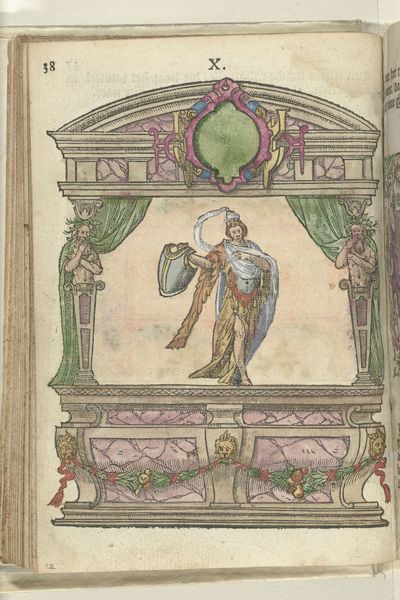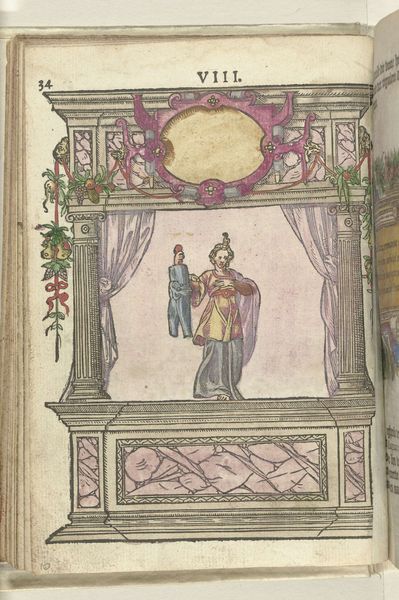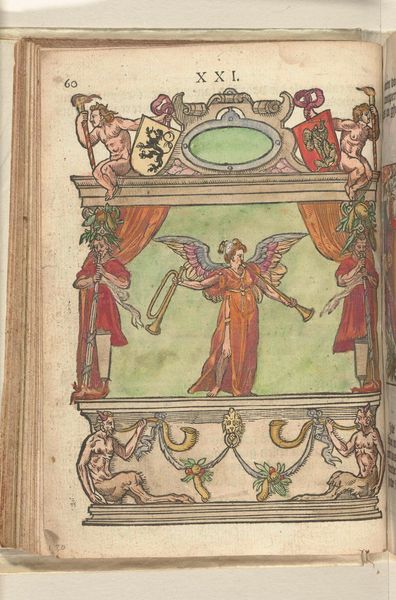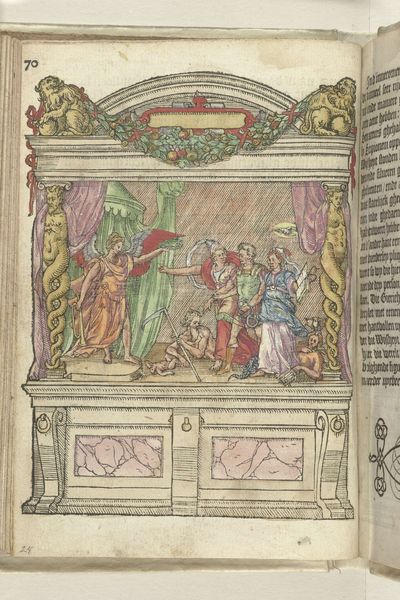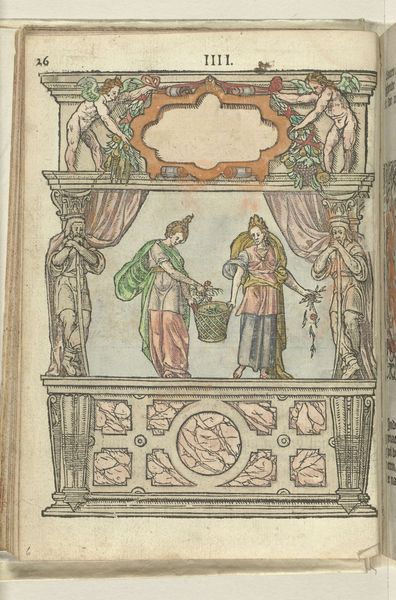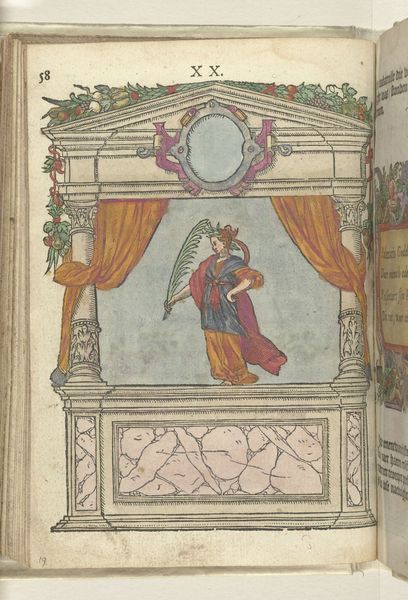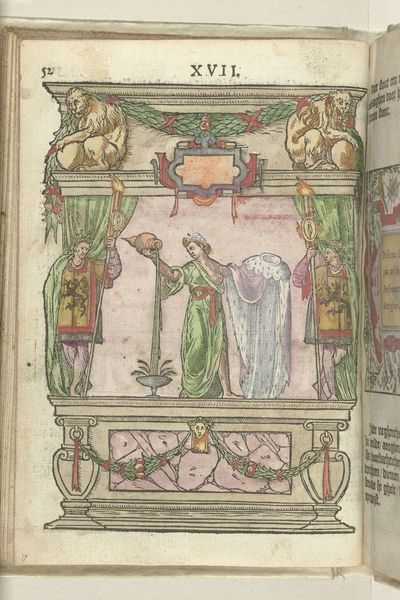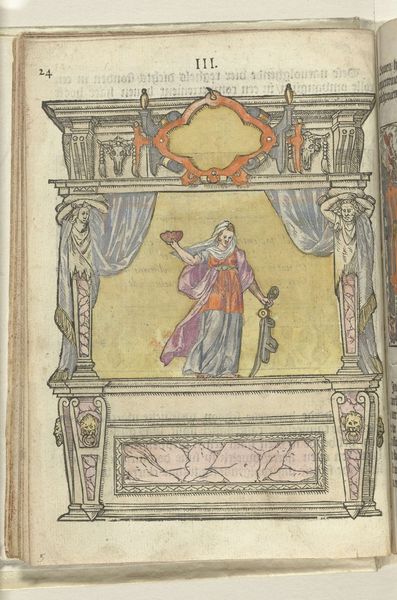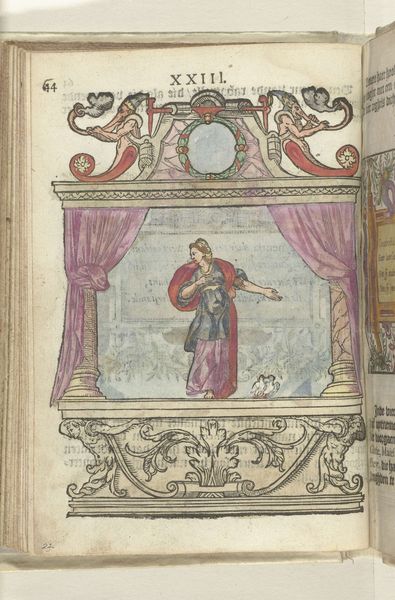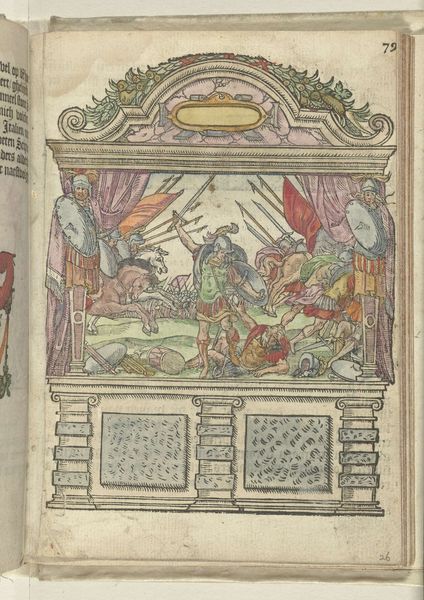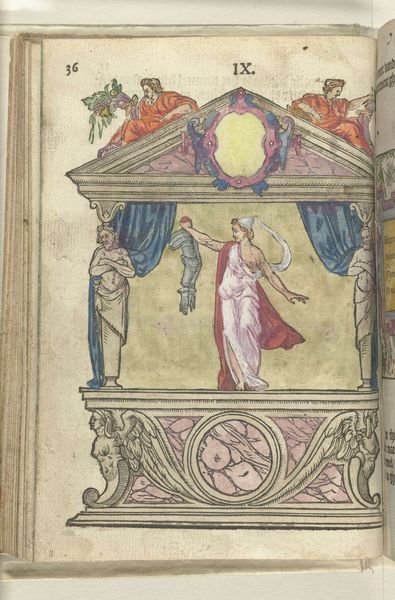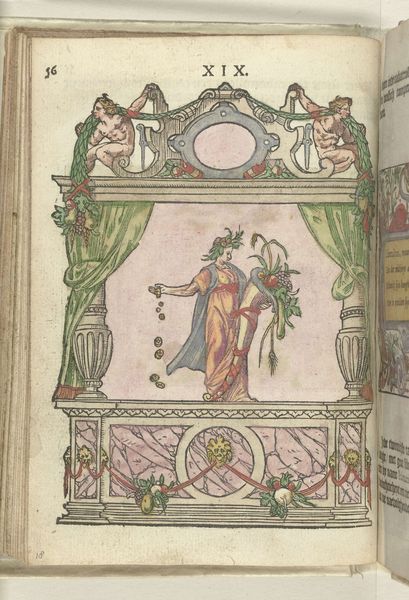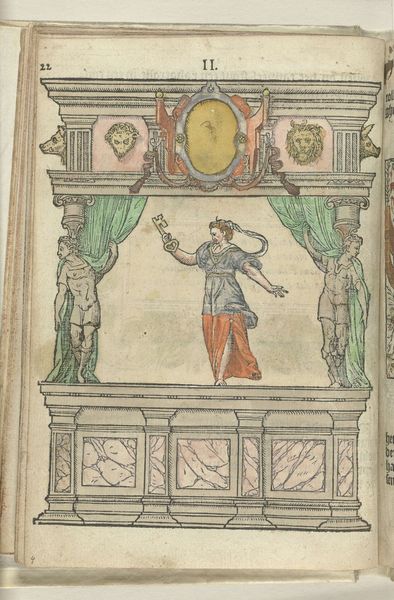
Toneel waarop de personificaties van Glorie, Majesteit, Generositeit, Magnificentie en Modestheid samen een kroon hoog houden, 1578 1578 - 1579
0:00
0:00
print, engraving
#
allegory
# print
#
figuration
#
11_renaissance
#
history-painting
#
northern-renaissance
#
engraving
Dimensions: height 155 mm, width 115 mm
Copyright: Rijks Museum: Open Domain
Curator: Welcome. Let’s turn our attention to this fascinating print by Antoni van Leest, dating from 1578 to 1579. It's titled "Toneel waarop de personificaties van Glorie, Majesteit, Generositeit, Magnificentie en Modestheid samen een kroon hoog houden"— quite a mouthful! Editor: It strikes me as quite theatrical. The composition resembles a stage set, doesn't it? And those figures hovering above, drawing back the curtains—it amplifies that feeling of a constructed reality. Curator: Exactly. As the title indicates, this work employs allegory heavily. We see the personifications of Glory, Majesty, Generosity, Magnificence, and Modesty uniting to elevate a crown. The medium, engraving, allowed for detailed lines that defined each figure, their drapery, and the architectural setting. Editor: Let's think about that crown. As an iconographer, it's impossible to ignore its symbolism. Crowns, of course, have long represented power and authority, but what about in this context? Is it a commentary on the nature of rulership, the qualities required for leadership? Curator: Perhaps, but also, consider the material context of printmaking. This image would have been disseminated widely. What kind of workshop created this? What social strata did Antoni van Leest inhabit? Those questions are just as important. Editor: A fair point. The circulation of prints certainly democratized images, to some degree, and broadened their potential impact. The figures themselves appear idealized, reminiscent of classical sculpture. Were these prints made for the elite? I can imagine an aristocratic patron wanting prints as conversation starters, tools of political self-fashioning. Curator: And consider the skill and labor invested in this relatively reproducible piece. We’re looking at a skilled workshop executing Van Leest's design; from the preparation of the metal plate, to inking and printing, each stage would involve specialized labor. This labor is easy to forget. Editor: Yes, the collaborative aspect is vital to recall. Returning to symbolism, it's interesting that Modesty is part of this group lifting the crown. What statement does that choice of representing the queen make? Curator: A crucial element to bring to the front of this interpretation is about the meaning and influence. A complex negotiation of ideals. Editor: Exactly! And as Northern Renaissance style goes, it gives me something to ponder!
Comments
No comments
Be the first to comment and join the conversation on the ultimate creative platform.
